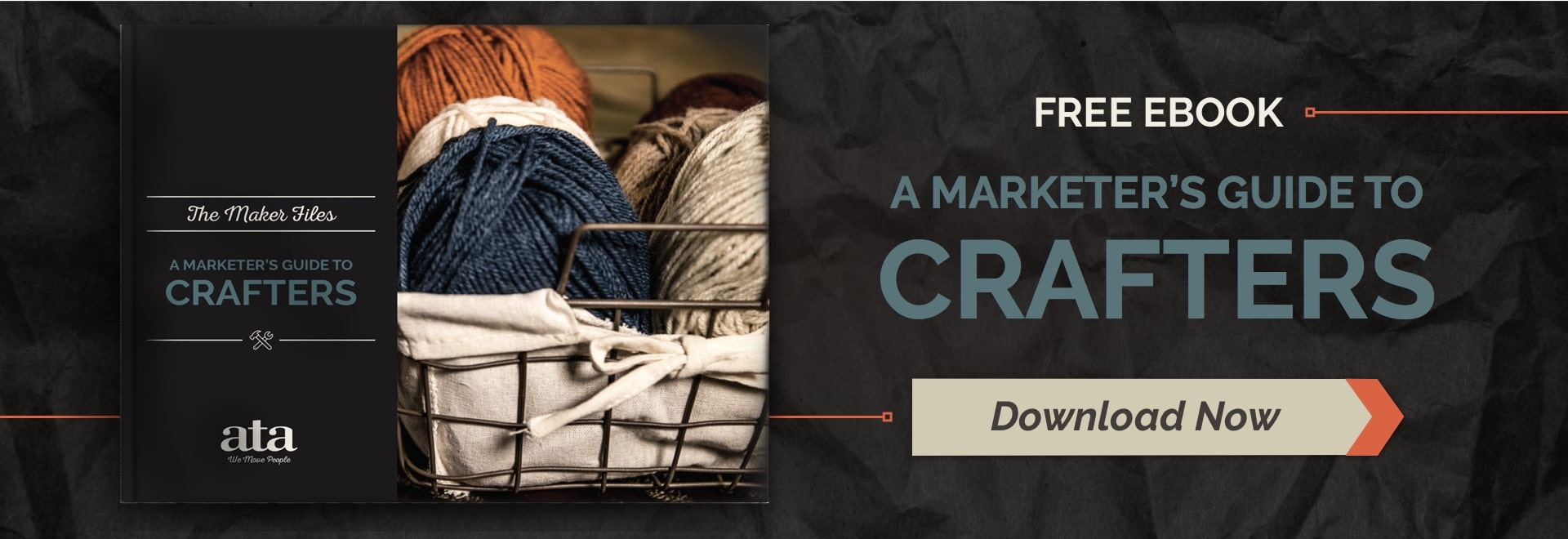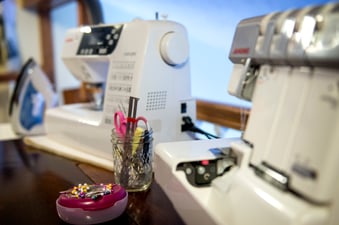 Makers who sew constitute a huge segment of the Maker Movement. Not only is there a huge community of passionate makers picking up and practicing the traditional art of sewing itself, but elements of sewing can be incorporated in multiple types of other crafts, like cosplay and even paper crafting. But whether someone is altering or sewing dresses, creating stuffed animals from a pattern or scratch, or embroidering pillows and quilts for the home, there's a list of common challenges that all of these makers are likely to share.
Makers who sew constitute a huge segment of the Maker Movement. Not only is there a huge community of passionate makers picking up and practicing the traditional art of sewing itself, but elements of sewing can be incorporated in multiple types of other crafts, like cosplay and even paper crafting. But whether someone is altering or sewing dresses, creating stuffed animals from a pattern or scratch, or embroidering pillows and quilts for the home, there's a list of common challenges that all of these makers are likely to share.
As a maker brand interested in connecting with the sewing community, your ability to understand, appreciate, and help solve these common problems goes a long way to impressing your target audience. Here's our guide to the top challenges faced by maker who sew, regardless of medium.
Top Challenges for Makers Who Sew
- Sourcing the right fabric: There's a delicate balance for makers to strike when they're sourcing and buying the fabric they need to bring their designs and projects to life. The price, color, pattern, material quality, and ethicality all need to be just right — and that's hard to find without compromising. At the end of the day, makers who sew will choose the best fit for what they're making, but brands should be aware of just how many long hours of hard work makers put into choosing the right fabrics and materials.
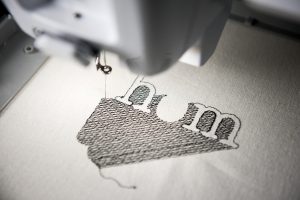 Machine and tool issues: Makers who sew have to be intimately familiar with their tools, especially their sewing machines, because of the sheer volume of ways they can cause problems. A malfunctioning machine can put a literal halt to a sewing process and cause a lot of stress for makers who have to either figure out how to fix it themselves or pay to have it repaired.
Machine and tool issues: Makers who sew have to be intimately familiar with their tools, especially their sewing machines, because of the sheer volume of ways they can cause problems. A malfunctioning machine can put a literal halt to a sewing process and cause a lot of stress for makers who have to either figure out how to fix it themselves or pay to have it repaired.- Building up basic sewing skills: The increased accessibility of sewing resources and tools has inspired plenty of new makers to take up the craft in recent years. But inexperienced sewists can expect a rather steep learning curve shortly ahead. Some sewing basics can only be learned through patience and practice, but without a little instruction or advice, it can be impossible to avoid plenty of rookie mistakes.
- Possible high overhead costs: A particular concern of makers looking to sell their designs and products is the prospect of putting a lot of money forward in overhead costs. Without knowing exactly what designs will sell, investments in tools and materials must be carefully calculated.
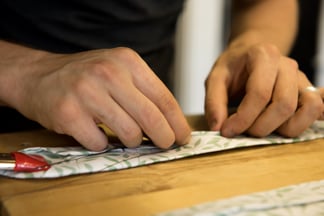 Copycat designers: There's nothing more disappointing for a sewist than sharing a unique design or finished product on Facebook, Instagram, Pinterest, or elsewhere only to see copies popping up shortly after. While there's not much a designer can do to prevent this issue, it's important for designers to constantly seek new inspiration and try new things in order to keep their craft fresh and unique.
Copycat designers: There's nothing more disappointing for a sewist than sharing a unique design or finished product on Facebook, Instagram, Pinterest, or elsewhere only to see copies popping up shortly after. While there's not much a designer can do to prevent this issue, it's important for designers to constantly seek new inspiration and try new things in order to keep their craft fresh and unique.- Identifying themselves: One problem we've discovered throughout our own talks with makers who sew is an issue of identity and labels (no, we don't mean the ones inside the clothes). Sewing is such a varied craft that it's difficult for one term to cover everything that one maker, let alone the entire community, does. Check out just a sample of the labels used to identify makers who sew in our recent blog post on this identity crisis.
How Your Brand Can Help Solve Sewing Challenges
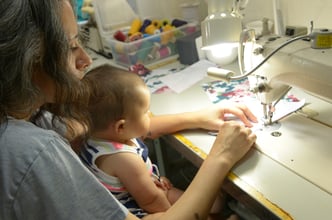 The first step to building a relationship with your target maker audiences is truly understanding them: their process, their challenges, their motivations, and more. But beyond just understanding, it's also important for your brand to connect with makers in order to inspire trust and hopefully, in the long run, future purchases and brand loyalty. Now that you know the challenges that makers who sew face on a regular basis, there are multiple ways your brand can start helping your audience find solutions to those challenges.
The first step to building a relationship with your target maker audiences is truly understanding them: their process, their challenges, their motivations, and more. But beyond just understanding, it's also important for your brand to connect with makers in order to inspire trust and hopefully, in the long run, future purchases and brand loyalty. Now that you know the challenges that makers who sew face on a regular basis, there are multiple ways your brand can start helping your audience find solutions to those challenges.
One major way to add value to your audience's lives is sharing your expertise through informational content and resources like how to videos, guides, FAQs, demonstrations, and more. You should also aim to become a hub for sharing inspirational content, as well as providing a space for sewists to connect with their fellow makers and learn from each other.
You might also consider setting up your sales organization to allow for purchasing in ways that benefit makers (and budgets) both big and small. One of the main complaints we heard from our sewing focus groups was that many independent makers are producing too many items to shop for materials and parts through retail, but not enough so that wholesale is financially viable. Perhaps your brand can find that coveted middle ground. And finally, it's your brand's turn to get creative and introduce brand new ways of solving these long lasting sewing challenges — whether it be through education, outreach, or even innovative new product. No matter what it is you offer, makers who sew will thank you for it.



